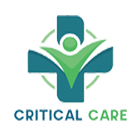- Home
- Departments
Departments Of Sepsis-Infection
Sepsis-InfectionSepsis is a life-threatening condition that arises when the body's response to an infection causes widespread inflammation and organ dysfunction. It can progress rapidly and lead to severe complications, including septic shock and multiple organ failure. Understanding the relationship between sepsis and infection is crucial for effective management and prevention.
1. Infection as a Trigger: Sepsis typically begins with an infection, which can be bacterial, viral, fungal, or parasitic in nature. Common sources of infection leading to sepsis include pneumonia, urinary tract infections, abdominal infections (such as appendicitis or peritonitis), skin and soft tissue infections, and bloodstream infections (bacteremia).
2. Immune Response: When the body detects an infection, the immune system mounts a response to fight off the invading pathogens. This response involves the release of inflammatory mediators, activation of white blood cells, and initiation of the coagulation cascade to contain the infection and prevent its spread.
3. Dysregulated Response: In some cases, the immune response becomes dysregulated, leading to systemic inflammation and tissue damage instead of effectively controlling the infection. This dysregulated immune response can result from factors such as overwhelming infection, immune system dysfunction, or host factors (such as age, underlying medical conditions, or immunosuppression).
4. Cascade of Events: In sepsis, the dysregulated immune response triggers a cascade of events that can lead to widespread endothelial dysfunction, microvascular leakage, tissue hypoperfusion, and cellular injury. This cascade of events contributes to the development of organ dysfunction and failure, including acute respiratory distress syndrome (ARDS), acute kidney injury (AKI), liver dysfunction, and coagulopathy.
5. Diagnostic Criteria: The diagnosis of sepsis is based on clinical criteria, including evidence of infection and a dysregulated host response, as defined by the Sequential Organ Failure Assessment (SOFA) score or the quick SOFA (qSOFA) criteria. Laboratory tests, imaging studies, and microbiological cultures are used to identify the source of infection and guide antimicrobial therapy.
6. reatment: Early recognition and prompt treatment of sepsis are essential for improving outcomes. Treatment typically involves a combination of antibiotics to target the underlying infection, source control (such as surgical drainage or debridement), and supportive care to stabilize vital functions. In severe cases of septic shock, vasopressor therapy and fluid resuscitation may be required to maintain blood pressure and perfusion to vital organs.
7. Prevention: Preventing infections is key to reducing the risk of sepsis. Strategies for infection prevention include hand hygiene, vaccination, appropriate antimicrobial use, infection control measures (such as isolation precautions), and early recognition and treatment of infections before they progress to severe sepsis or septic shock.
Overall, sepsis is a serious and potentially life-threatening condition that can arise from any type of infection. Understanding the relationship between sepsis and infection, along with early recognition, prompt treatment, and infection prevention efforts, are essential for reducing the burden of sepsis and improving outcomes for affected individuals.

.webp)